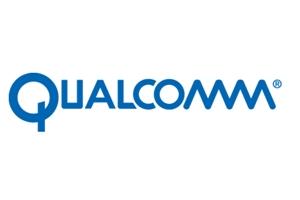Qualcomm introduces new platform naming structure as ‘processor’ doesn’t capture its anthology of technology

Don McGuire, vice president ofProduct Marketing, Qualcomm
Over the coming months, Qualcomm Technologies will roll out changes and updates to our product brand positioning to best articulate the value of our technology and products for our customers and their end users.
One of the first updates, says vice president of Product Marketing, Don McGuire, is how we will apply the Qualcomm Snapdragon brand.
For decades, the semiconductor industry has used the term “processor” to mean the component that powers the most advanced devices. It’s a word that Qualcomm Technologies has embraced over the years with our Snapdragon brand, or as we say — our Qualcomm Snapdragon processor. But the word is an inadequate representation of what the technology actually is, and the solutions that tens of thousands of Qualcomm Technologies innovators have worked on.
In truth, Snapdragon is more than a single component, a piece of silicon, or what many would misinterpret as the CPU; it’s an anthology of technology, composed of hardware, software, and services that are not fully captured in a word like “processor.” That is why Qualcomm Technologies is refining our terminology by referring to Snapdragon as a “platform” instead of a processor.
The Snapdragon platform takes our offerings beyond a single chip. While the single processor form factor is truly a system-on-a-chip (SoC), housing custom technology like an integrated modem, CPU, GPU, and DSP, there is a lot more going on outside of the chip that is designed to ultimately support a wide variety of devices.
Technologies from the RF Front End — without which your mobile device wouldn’t be able to acquire a signal, make a phone call, or surf the web — to Qualcomm Quick Charge, the Qualcomm Aqstic audio DAC, Wi-Fi (802.11ac and 11ad), touch controllers, and finger print technology, are all engineered to work together with the SoC to deliver a superior and smooth user experience.
 With the Snapdragon platform we can now articulate the value that we provide to a device manufacturer — from developing algorithms for great pictures and videos, to making sure that the battery is long lasting. More importantly, the word “platform” will be used to explain the combined key user experiences — camera, connectivity, battery life, security, immersion — that these essential technologies are designed to deliver.
With the Snapdragon platform we can now articulate the value that we provide to a device manufacturer — from developing algorithms for great pictures and videos, to making sure that the battery is long lasting. More importantly, the word “platform” will be used to explain the combined key user experiences — camera, connectivity, battery life, security, immersion — that these essential technologies are designed to deliver.
And these experiences are not just for smartphones anymore, but are applicable across verticals such as automotive, IoT, and mobile PCs.
Moving forward, only premium mobile platforms will retain the Snapdragon brand, while processors in the 200 tier will fall under the new Qualcomm Mobile name. Our belief is that bringing the 200-level mobile platforms under the new Qualcomm Mobile brand will help differentiate entry-level and high- volume solutions from our flagship and high-end Snapdragon premium mobile experience platforms. Our goal is to create better clarity and expectations for our customers.
The shift isn’t seismic, but we believe it is a step in the right direction and that it will help us better demonstrate the overall value of a chip, beyond “speeds and feeds.” It better acknowledges those who have done extensive work on the entire platform, and key acquisitions that Qualcomm Technologies has made to bolster its position in the semiconductor industry.
We believe it will also help our customers better demonstrate the overall value that Qualcomm Mobile and Qualcomm Snapdragon technologies bring to their products. As we expand our presence outside of mobile, we want our nomenclature to reflect all the places we’re making a difference, from mobile PCs and servers, to automotive, IP cameras, drones,VR/AR headsets, and beyond.
The author of this blog is Don McGuire, vice president of Product Marketing, Qualcomm
Comment on this article below or via Twitter @IoTGN
